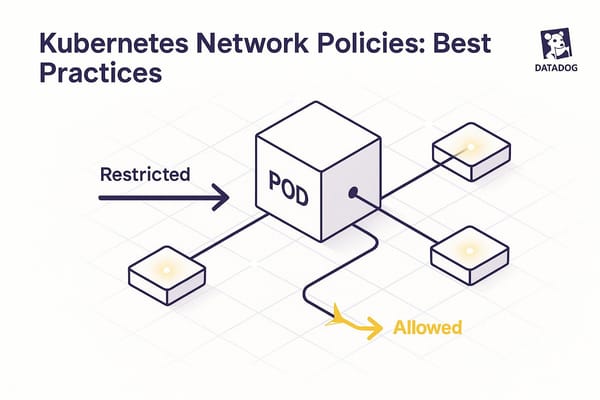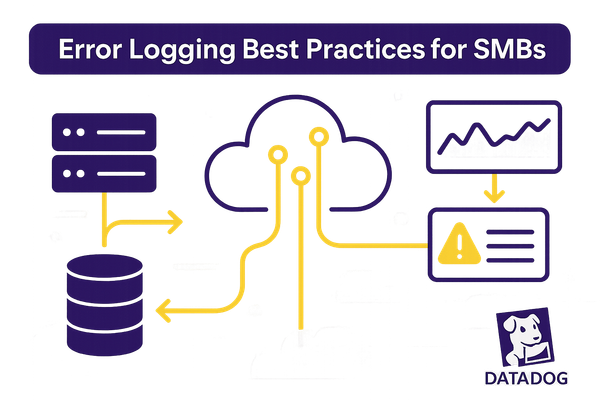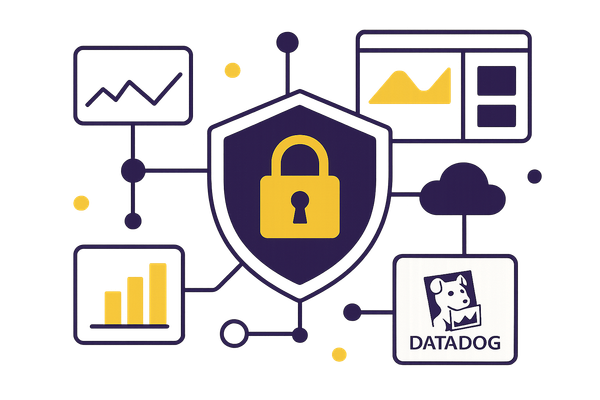Capacity Planning with Datadog: Key Insights
Learn how effective capacity planning with data-driven insights can help SMBs optimize resources, control costs, and drive growth.
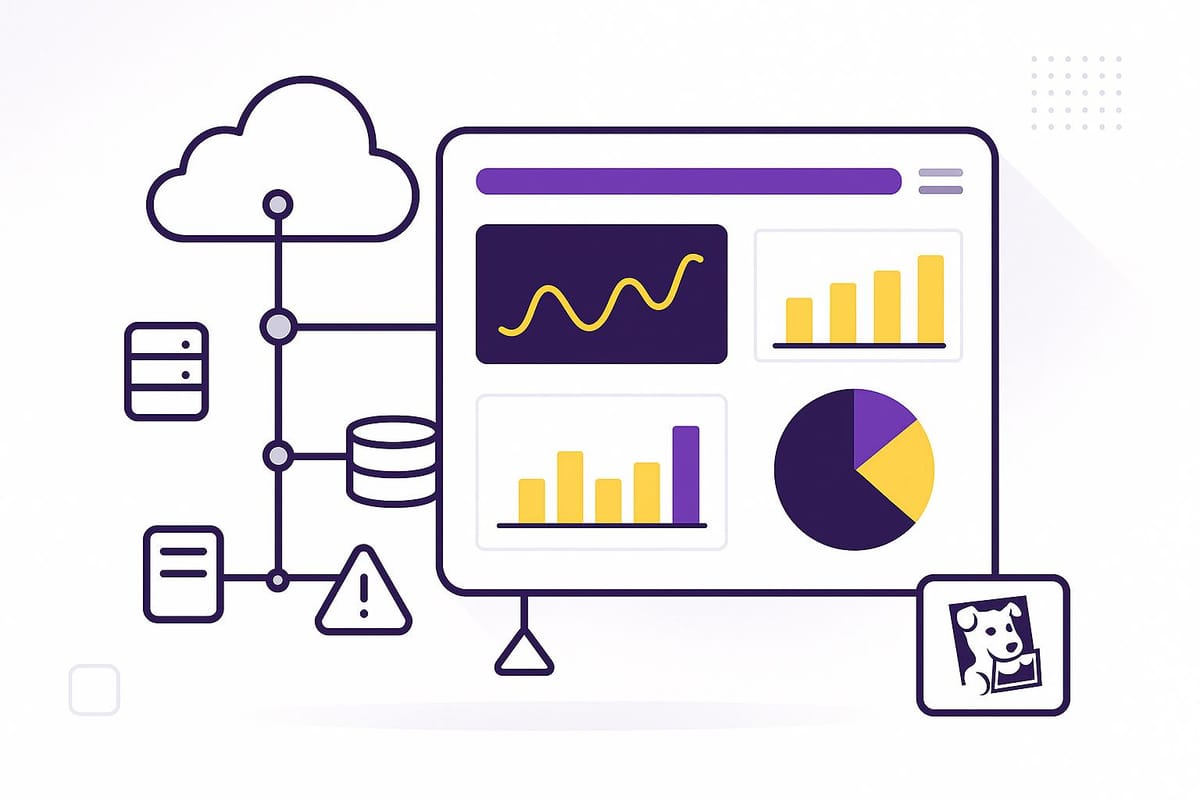
Capacity planning helps businesses allocate resources efficiently to meet demand while controlling costs. For SMBs, this process is especially important due to limited budgets and scaling challenges. Datadog simplifies capacity planning with tools to monitor key metrics like throughput, error rates, and latency, while using historical data and machine learning to forecast resource needs.
Key Takeaways:
- Benefits for SMBs:
- Control costs by avoiding overprovisioning.
- Optimize performance and reduce downtime.
- Make data-driven scaling decisions.
- Datadog Tools:
- Pricing starts at $15/host/month.
- Offers raw data retention for 15+ months.
- Tracks CPU, memory, and network usage trends.
- Cost-Saving Tips:
- Use Flex Logs for affordable log processing.
- Switch to INFO logging to cut log volumes by 70–80%.
- Save on monitoring with pre-paid container plans.
Datadog's platform connects technical metrics to business outcomes, helping SMBs align resource planning with growth and profitability goals. Start by monitoring critical systems, analyzing trends, and setting up dashboards to track performance and costs.
Using Historical Data for Planning
Data Storage and Time Frames
Historical data plays a critical role in enhancing Datadog's planning tools by uncovering long-term trends. Datadog retains raw, high-resolution performance data for at least 15 months, giving small and medium-sized businesses (SMBs) the ability to make informed, data-driven decisions. The platform provides three storage tiers, each tailored to different business priorities:
| Storage Tier | Cost Structure | Best Use Case |
|---|---|---|
| Standard | $0.10/GB + $2.55 per million events per month | Real-time monitoring |
| Flex | $0.10/GB + $0.05 per million events per month + compute cost | Historical analysis |
| Archive | $0.10/GB | Long-term retention |
When setting up data storage, it’s important to ensure metrics are collected with enough granularity to spot critical performance variations. This level of detail helps identify seasonal trends and unexpected spikes that could influence capacity planning. By understanding these patterns, businesses can better align their resource allocation with actual needs.
Resource Usage Patterns
A closer look at historical data often highlights inefficiencies in resource provisioning. For instance, a 2020 study revealed that nearly half of all containers utilized less than one-third of their requested CPU and memory resources. To address this, Datadog’s process agent provides detailed insights into:
- CPU usage trends
- Memory consumption patterns
- Network activity fluctuations
- Storage performance metrics
The Live Process feature further enhances this by offering percentile aggregations for CPU and memory usage. This helps teams pinpoint actual resource requirements, making it easier to adjust allocated capacity. Such insights are invaluable for improving efficiency and reducing waste.
Predicting Future Needs
Datadog’s machine learning-powered forecasting algorithms take resource planning to the next level. These tools factor in seasonal patterns, growth trajectories, and optimization opportunities to deliver accurate capacity forecasts - even when metrics experience sudden changes.
| Strategy | Implementation | Impact |
|---|---|---|
| Conservative Initial Sizing | Use baseline benchmarks to estimate resource needs | Avoids overprovisioning |
| Continuous Monitoring | Analyze p95 memory usage trends | Enables real-time adjustments |
| VPA Integration | Leverage Kubernetes Vertical Pod Autoscaler | Automates resource scaling |
"Collecting data is cheap, but not having it when you need it can be expensive, so you should instrument everything, and collect all the useful data you reasonably can."
– Alexis Lê-Quôc, Datadog
This data-centric approach to capacity planning has delivered impressive results. For example, by applying these strategies internally, Datadog achieved over $17.5 million in annual cloud cost savings.
Zendesk: Optimizing performance and capacity with APM and Trace Search
Planning Guidelines and Tips
Planning capacity effectively isn't just about predicting future needs - it's about making smart decisions that balance resources, performance, and costs.
Kubernetes Resource Management
Managing Kubernetes resources is a cornerstone of capacity planning. Start by setting clear resource requests and limits to ensure optimal utilization. Use namespaces to isolate workloads, keeping things organized and manageable. Incorporating liveness probes is another smart move - they help maintain application health by ensuring your services are always up and running. Together, these strategies create a strong foundation for better alerting and streamlined cost control.
Alert and Dashboard Setup
Did you know that organizations experience a 30% annual rise in alert incidents? To stay ahead, design dashboards that zero in on critical metrics like CPU usage, memory, disk space, response times, and error rates. Set alert thresholds based on historical data and current performance trends. This focused approach not only simplifies monitoring but also helps keep costs under control.
Reducing Monitoring Costs
Want to cut down on log volumes? Switching from DEBUG to INFO logging can reduce them by 70–80%. Take it a step further with smart log management: filter logs at the source, use sampling techniques, and implement tiered retention policies. These methods can lead to 15–25% savings per quarter, all while maintaining robust monitoring coverage. It's a win-win for efficiency and cost savings.
Connecting Planning to Business Results
Transform technical metrics into straightforward business outcomes to fuel consistent growth for small and medium businesses (SMBs).
Measuring Business Impact
Companies with strong monitoring governance often save significantly on costs. To connect infrastructure data to revenue-generating goals, align key performance indicators (KPIs) with technical metrics:
| Business Metric | Related Datadog Metrics |
|---|---|
| Revenue Impact | Response times, error rates, transaction success rates |
| Customer Experience | Page load times, API latency, service availability |
| Operational Efficiency | Resource utilization, cost per service, alert frequency |
Dashboards showcasing these metrics offer valuable historical insights, enabling informed, data-driven decisions. For instance, tracking response times alongside conversion rates can help pinpoint and address issues quickly.
These actionable insights also enhance leadership reporting, fostering more impactful discussions.
"Focusing on both growth and profitability is hard. Business was easier when only growth mattered. But a focus on profitability presents a new set of challenges and opportunities for your team to shine. The teams that can successfully transition from 'growth at all costs' to 'profitable growth' will make themselves richer. They will also walk away with the pride of having pulled off a transition that only the highest performing teams have been able to make."
– Bessemer Venture Partners
Reporting to Leadership
Turn technical data into strategic reports that highlight the effectiveness of planning. Use concise executive dashboards to focus on three key areas:
- Cost Optimization: Analyze spending trends and uncover savings opportunities by attributing costs to specific teams and services.
- Growth Metrics: Track how infrastructure scales with business expansion, noting that log volumes typically increase by 200–300% annually.
- Performance Impact: Leverage Datadog's service level objectives (SLOs) to ensure capacity planning mitigates performance risks.
Tailor reports to meet the needs of individual stakeholders:
| Stakeholder | Focus Areas | Key Metrics |
|---|---|---|
| CFO | Cost Management | Cost per customer, resource utilization, ROI |
| CTO | Technical Performance | System availability, response times, error rates |
| CEO | Business Growth | Customer satisfaction, service reliability, market expansion capacity |
Summary and Next Steps
Key Planning Steps
To make the most of capacity planning with Datadog, it's essential to take a structured, data-driven approach. Start by using tags to track costs for specific teams and services. This detailed view not only helps you control expenses but also reveals opportunities for optimization.
You can take it a step further by tapping into advanced analytics. For example, organizations incorporating AI in DevOps have seen impressive results, including a 50% drop in deployment failures and a 60% boost in developer productivity.
With these steps in place, you're ready to implement actionable strategies and build a solid monitoring setup.
Getting Started with Datadog
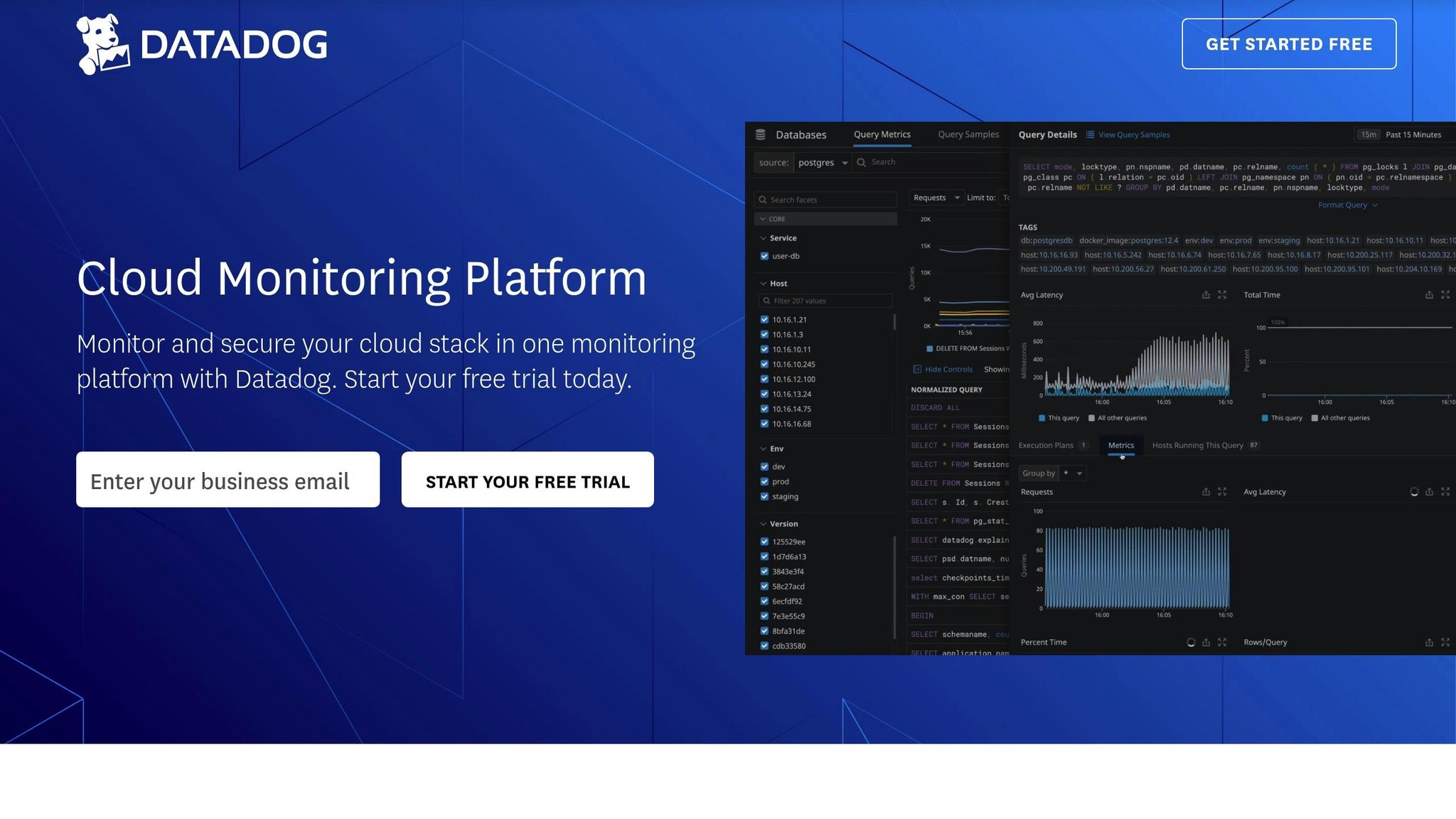
Kick off capacity planning by focusing on key metrics related to performance, resources, and costs. Here are a few cost-efficient strategies to consider:
- Flex Logs: Process high volumes of data affordably at just $0.05 per million logs.
- PrivateLink: Replace NAT Gateways and lower transfer costs by up to 80%.
- Pre-paid Container Monitoring: Save by paying $1 per container per month.
These methods align well with earlier cost-control practices and can help you manage expenses effectively.
When setting up monitoring, prioritize based on business impact:
- Critical Systems: Set up immediate alerts for outages and security incidents. Ensure 24/7 response protocols are in place for high-priority issues.
- Performance Metrics: Keep an eye on key indicators like throughput and latency during business hours. Configure moderate-priority alerts to flag performance dips.
- Trend Analysis: Regularly review data on resource usage and cost distribution. Use these insights to fine-tune your capacity planning strategies.
FAQs
How can Datadog's machine learning forecasting help SMBs plan for future resource needs?
Datadog leverages machine learning to analyze historical data and uncover patterns in resource usage. This helps small and medium-sized businesses (SMBs) anticipate future demand and plan their capacity with greater precision.
By gaining insight into expected resource requirements, businesses can adjust their scale more effectively. This approach helps prevent resource shortages while avoiding the costs associated with over-provisioning. The result? Lower expenses and systems that stay dependable and responsive, even as demand shifts.
How can I reduce monitoring costs when using Datadog?
To keep your Datadog monitoring costs in check, start by fine-tuning how you use the platform. Reduce log verbosity and adjust log retention periods, as Datadog's pricing is tied to the volume of logs you ingest and store. Disabling features or integrations that aren't actively contributing to your monitoring goals can also make a big difference.
Set up spike alerts to quickly identify unexpected surges in usage, and take a closer look at your tagging strategy - eliminate any unused or redundant tags that could be inflating costs. Regular audits of your Datadog setup, including uninstalling agents that are no longer necessary, can further help manage expenses. These adjustments allow SMBs to maintain effective monitoring without overstretching their budgets.
How can SMBs use Datadog's metrics to align technical performance with business goals and drive growth?
SMBs can use Datadog to tie metrics directly to their business objectives by focusing on key performance indicators (KPIs) that matter most - like customer satisfaction, system reliability, or operational efficiency. With access to Datadog's historical data and the ability to create custom metrics, businesses can track these KPIs in real-time, helping them make smarter decisions about where to allocate resources and how to enhance services.
On top of that, Datadog's machine learning tools can predict future resource demands, giving SMBs the insight they need to scale effectively while keeping costs under control. By linking technical performance to tangible business results, SMBs can streamline operations, deliver better customer experiences, and drive revenue growth.

